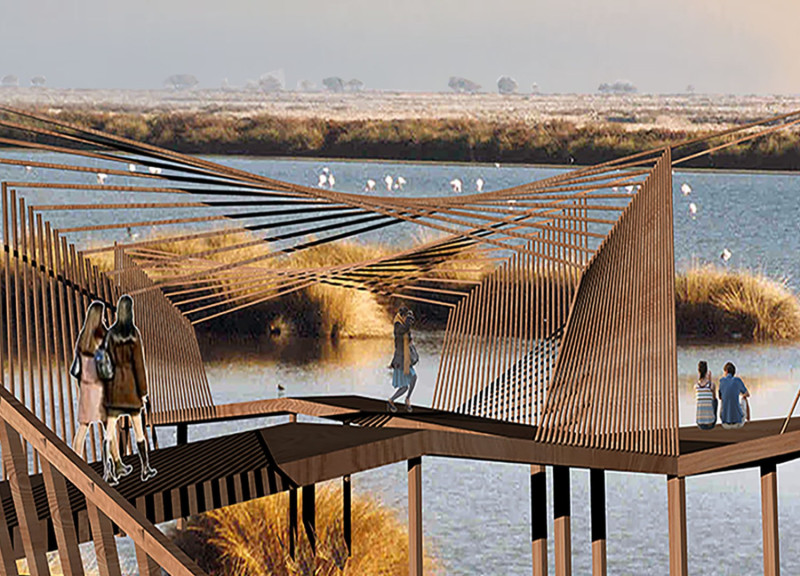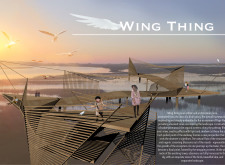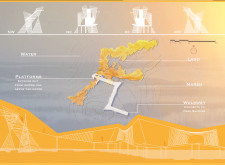5 key facts about this project
## Project Overview
Located within Pape Park, this architectural structure is distinguished by its design inspired by the form of a bird's wing. The intention behind the project is to enhance visitor experiences within the park's rich natural landscape, characterized by its biodiversity and marsh environments. By integrating architectural form with natural elements, the structure provides opportunities for observation and engagement with the surrounding ecosystem.
## Spatial Experience and Interaction
### Infrastructure Design
The design features multiple platforms that extend over the water, offering unobstructed views of the marshland while connecting different areas of the park to improve accessibility. At a width of 3 meters, the walkways are gently undulating and accommodate visitors of all abilities, with wheelchair-accessible ramps ensuring inclusivity. Vertical wooden screening elements, standing 5.5 meters tall, are strategically positioned to filter sunlight and create dynamic patterns of light and shadow, enhancing the aesthetic experience and providing opportunities for wildlife observation.
### Ecological Engagement
The structure fosters an interactive relationship between visitors and the park's biodiversity. Elevated platforms minimize disruption to the marsh habitat, while designated viewing points facilitate the identification of local bird species, thus promoting ecological education. The design encourages exploration by presenting varied perspectives of the surroundings, engaging visitors through a series of contemplative journeys marked by the interplay of light and shadow, further enriching their sensory experiences in nature.
## Material Choices
Sustainability is a key consideration in material selection, with native pine wood used as the primary material for its durability and compatibility with the local environment. This choice not only supports ecological responsibility but also establishes a cohesive aesthetic with the landscape. Organic screening materials contribute to the structure's functionality and visual appeal, further strengthening the integration with the ecosystem.





















































